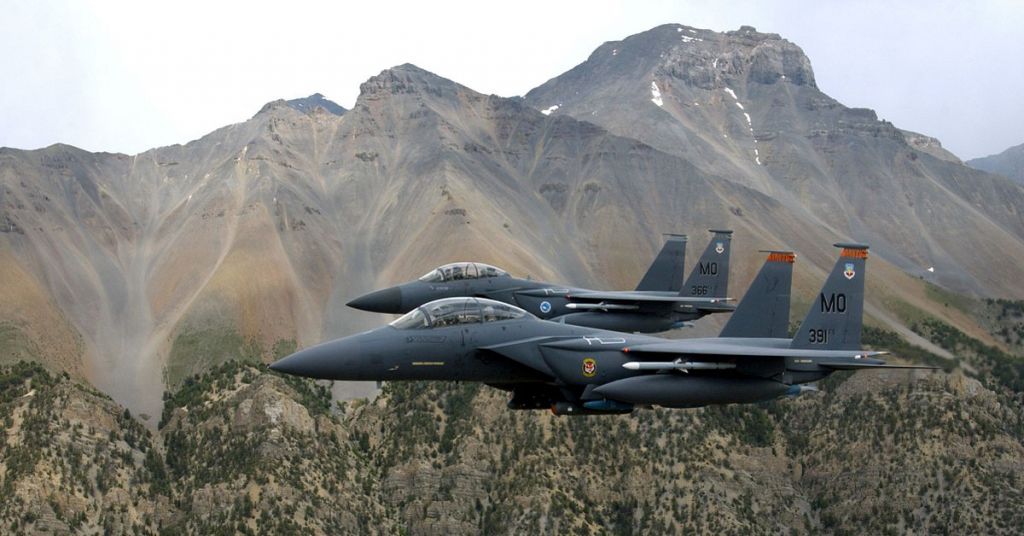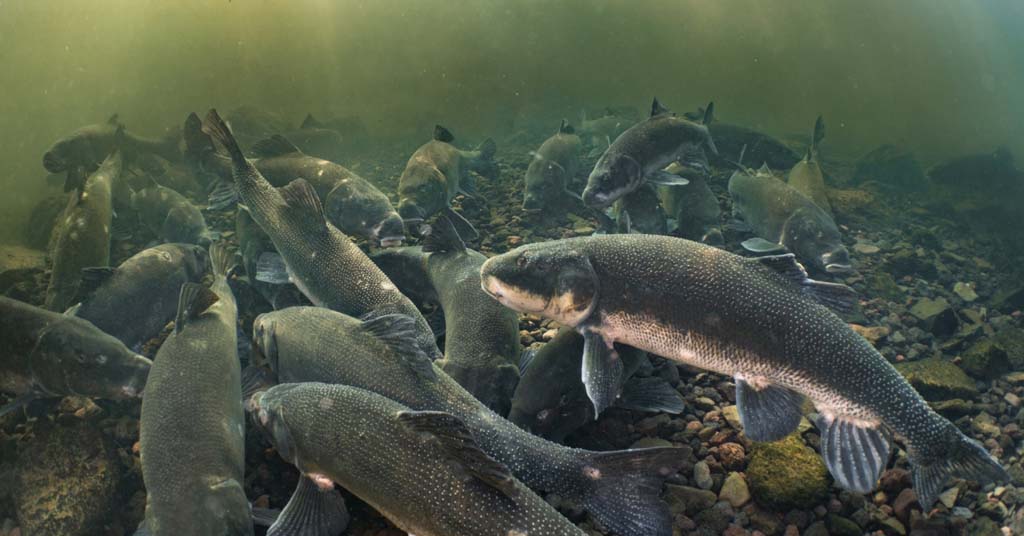A proposal to step up supersonic training missions over the Owyhee Desert has triggered a booming reaction

Low bid: The Air Force wants permission for F-15E Strike Eagles to perform more low-level training missions, like this one over the Sawtooth Range. Photo by USAF/Tech. Sgt. Debbie Hernandez
By Jordan Rane. October 20, 2021. One of the country’s most sparsely populated and persistently defended high desert wild lands may soon be subject to frequent sonic booms and shrieking fighter jets.
The Mountain Home Air Force Base in southwestern Idaho is proposing expanded military training allowances across large portions of the Owyhee Desert—a 9-million-acre landscape of shrub steppe and remote canyons spanning three states cherished by Tribes, ranchers, sportsmen, paddlers, hikers, conservationists, scientists and stargazers.
The air base’s Proposal for Airspace Optimization for Readiness would increase both the frequency and low-flight intensity of jet fighter exercises across giant sections of southwestern Idaho, northern Nevada and southeastern Oregon.
MORE: Invasive plant species are decimating Oregon’s rangeland
Current airspace restrictions in the latter two states within the established USAF training range are set above at least 10,000 feet—or 30,000 feet when breaking the sound barrier.
“In many cases that’s barely noticeable—you might see those planes before you hear them—but it’s nothing like what’s being proposed in the current plan,” says Mark Salvo, conservation director at Oregon Natural Desert Association (ONDA). “We’re deeply concerned about fighter jet noise and disturbance to wild lands, wild waters, sensitive wildlife and local communities, the risk of wildfire from the increased use of flammable flares—and the fact that the Air Force hasn’t explained why it needs to conduct more and more intense training across this huge tri-state area.”
‘Gunfighters’ legacy
Mountain Home Air Force Base is home to the 366th Fighter Wing (nicknamed the “Gunfighters”) and the F-15E Strike Eagle, a dual-role fighter designed to perform air-to-air and air-to-ground missions. An array of avionics and electronics systems gives the F-15E the capability to fight at low altitude, day or night, in all weather.
The 366th Fighter Wing’s primary mission is to provide combat airpower and support, as well as quick response to the military’s worldwide contingency operations.
The base is also used for training by the Singapore Air Force, which has a detachment of F-15SG fighters on long-term assignment there.

Friendly skies? The Air Force wants fewer restrictions for its 366th Fighter Wing. Photo by USAF
This isn’t the first time the USAF has proposed expanding training in the Owyhee Desert from its Mountain Home Air Force Base.
Seeking live bombing, missile shooting and low-flying exercises in the area in 1989, the Air Force expected minimal opposition in one of the country’s most remote and lightly populated areas.
This turned out to be a miscalculation.
Opposition from Idaho-based groups led to nearly a decade of litigation and a compromise that ultimately allowed restricted low-altitude jet fighter training in Idaho’s Owyhee County.
Public comment deadline Oct. 25
In Oregon, the USAF’s proposal could increase the frequency of sonic boom-producing training flights to nearly 19 per day—shattering the area’s famed Canyonlands, nicknamed “The Big Quiet,” and distressing indigenous wildlife.
ONDA has launched a new online story map of the area.
Oregon Senators Ron Wyden and Jeff Merkley have proposed protecting more than a million acres of wilderness in the Owyhee Canyonlands, and designating 33 miles of Wild and Scenic Rivers precisely where the military has proposed more intensive training.
The military’s plan would also impact more than 500,000 combined acres of Wilderness Study Areas and Bureau of Land Management lands, according to ONDA.
Much of the Oywhee Desert’s sprawling shrub steppe and canyons are on public land.

A quiet place: Groups fear more Air Force training would spoil places like the West Little Owyhee River Canyon. Photo by Tim Neville
“The Air Force needs to hear that there is strong, broad support for conservation in the Owyhee Canyonlands and southeastern Oregon, and that their proposal threatens to undermine the qualities that make this region so exceptional,” according to an ONDA web posting.
The deadline for public comment on the Air Force’s proposal has been extended to October 25. The Air Force is required to provide a final environmental impact statement by a date that remains pending. A draft version of the EIS can be found here.
You can submit a comment directly to the USAF here or copy an ONDA letter and submit a comment here.
“Given the breadth and depth of public comment provided on the draft plan, we suspect it will take many months just to incorporate that (public) input,” says Salvo.
Columbia Insight contributing editor Jordan Rane is an award-winning journalist whose work has appeared in CNN.com, Outside, Men’s Journal and the Los Angeles Times.









